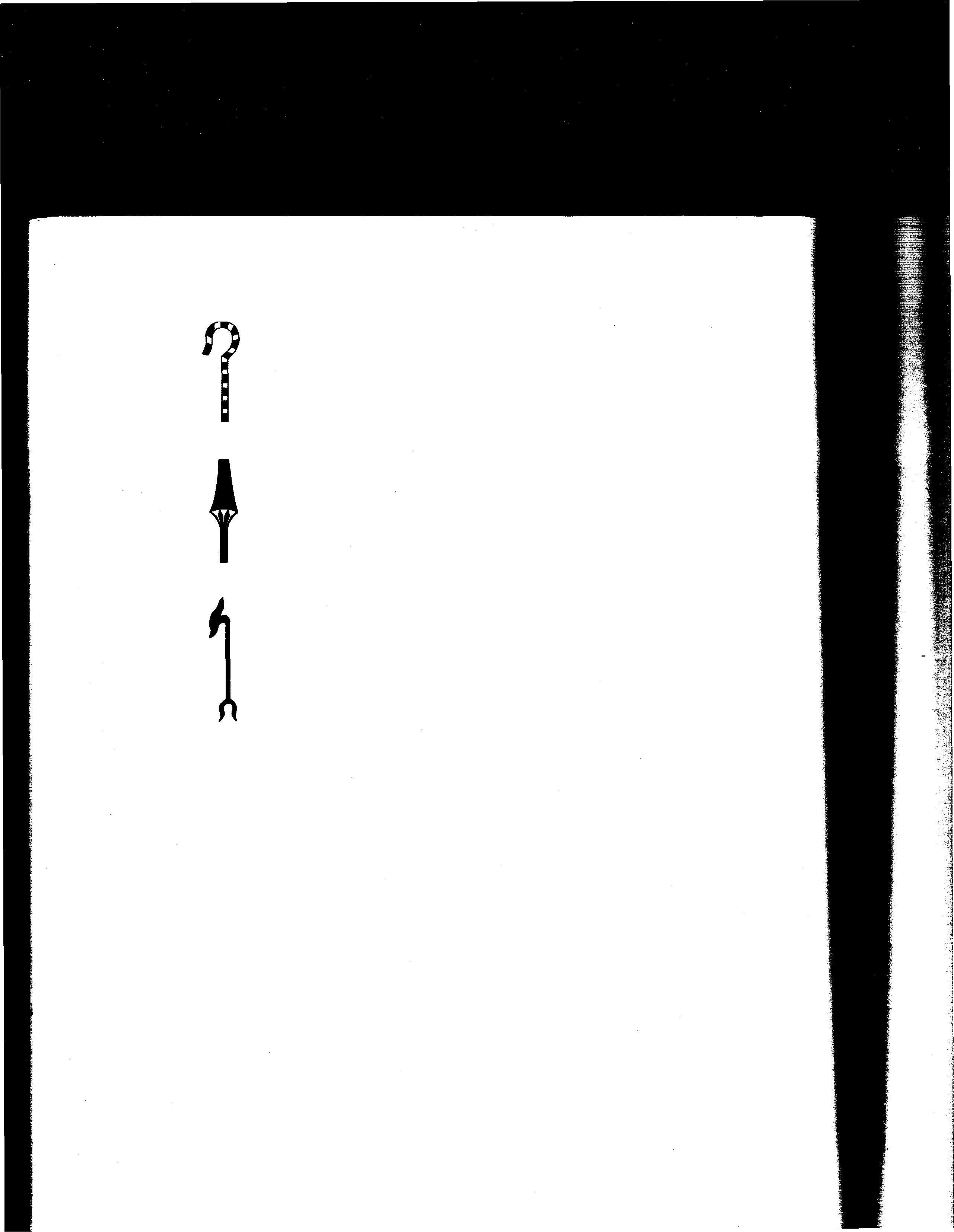
3 minute read
Figure 65. Offerings of the Hours
Heka The crook-originally the shepherd's staff-is one of the sceptres of royalty, representing the divine pattern (Maat) that guides humanity. In the left hand it extends Sia, the innate wisdom awakened in the monarch.
Sekhem As a hieroglyphic sign, this sceptre represents authority and the power it brings. It is also known as the Kherep, the "wand of the master." It often accompanies the royal insignia of crook and flail, denoting the active influence given the monarch by the gods.
Advertisement
Uas Carried exclusively by Sekhmet and male deities in the left hand. The shaft represents the electromagnetic flux first emanated by Ptah. It is believed by some to have been fabricated from the mummified remains of the bull' s penis and scrotum, symbolizing the virile power of the male creator gods.
Figure 61-Tools and Sceptres of the Temple Magician
Objects charged with power have always been associated with acts of theurgy, and a wide variety of implements are depicted on inscriptions depicting the priestly art in temple and tomb. Each Neter possesses a sceptre that both represents and transmits its power, though they are often found interchangeably. And in the sacred anatomy, each of the subtle bodies possesses a power that is raised by a sceptre. A morning hymn inscribed in the sanctuary of the Edfu temple describes the regalia and sceptres of the god as they are presented in the morning service. It also specifies the hand into which each sceptre is placed.
Observance
An invocation to Anpu is initially made to ensure that protective influences will be drawn into the objects to be empowered. Certain sceptres should be inscribed with the names of their protective deities beforehand. For example, the flint knife belongs to Sekhmet-Bast, the Heka and Nekheka belong to Asar, and the sistrum
One known rite exclusive to Sekhmet-Bast is an extensive litany, recited in an event known as "the ritual of appeasing the Eye." The name is a reference to the terrifying power of the goddess' fiery gaze that could annihilate the enemies of her father, Ra. Three hundred and sixty-five recitations, each elucidating her destructive powers, were spoken annually to the same number of her images, each standing for one day in the Solar year.
Enigmatically, the same quantity of stunningly powerful black granite statues of the goddess have been discovered at several sites, which were undoubtedly meant to represent her power over each of the days. Such groups of statuary have been discovered at the southern sector of the Karnak within the precinct of Mut, and at the mortuary temple of Amunhotep III on the west bank of Thebes. The purpose of the rite was to appease the goddess each day and ensure the protection of the monarch thereby. She is also connected to the dekanoi; the recitations were meant to prevent the dekan spirits in the celestial realm from bringing pestilence on their days of rising throughout the year.
Conversely, the healing powers of the goddess were recognized and honored. Her priesthood was renowned throughout the ancient world for its skill in surgery, medical treatment, and psychic healing, particularly exorcism. The most esteemed of her Senu was Imhotep ("he comes in peace"), the Old Kingdom sage whose accomplishments in architecture and the sciences were only exceeded by his healing powers. Throughout the ages, he was regarded as a miracle worker, and temples dedicated to his service extend nearly the full span of Egyptian history-thousands of years.
Imhotep is the intercessor to Sekhmet-Bast, the Neter whose powerful nature was never approached-even by royalty-except by her dedicated priesthood. Imhotep's sanctuaries include the upper terrace at Hatchepsut's house of eternity, the modern Deir el Bahri on the western bank of Thebes. A healing sanctuary in his name is also present at Philae, preceding the eastern pylon of Auset's temple. Other places where he is honored include the necropolis of Saqqara, where his legendary tomb has yet to be unearthed and where Graeco-Roman historians spoke of a vast healing center dedicated to his apotheosis, called the Asklepieion.
At Karnak, the Roman temple of Ptah features a unique dedication to Imhotep and another deified healer who lived more than a thousand years later, Amunhotep,









